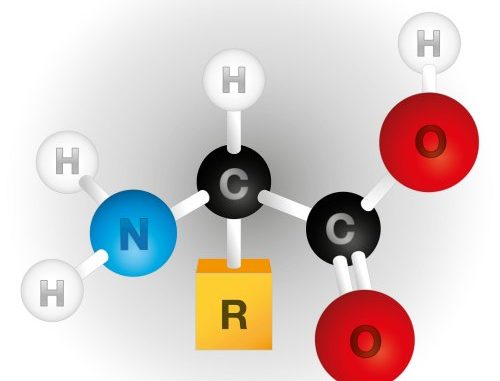
Amino acids, popularly known as the building blocks of proteins, are chemical compounds that combine to form proteins. These biomolecules play a role in a variety of biological and chemical functions in the human body and are essential for human growth and development. The number of amino acids found in nature is estimated to be around 300.
The primary amino groups (-NH2) and carboxyl groups (-COOH) are found in amino acids. Amino acids are found in protein components. By understanding the amino acid structure, you will know about the properties of protein and their structure as well. In this article, we will discuss the importance of amino acids and their classifications.
What are Amino Acids?
Amino acids are the building blocks of proteins as well as the key ingredient of life. The nine essential amino acids in humans are listed below.
- Lysine
- Tryptophan
- Methionine
- Phenylalanine
- Threonine
- Histidine
- Valine
- Leucine
- Isoleucine
Importance and Functions of Amino Acids
Amino acids are the main constituent of proteins. When a person consumes protein-rich food, the digestive system breaks down the protein into amino acids. To carry out essential activities, the body next aggregates the amino acids in various ways. Some functions of amino acids are listed below:
- Phenylalanine aids in the maintenance of a healthy systema nervosum as well as memory enhancement.
- Valine helps in enhancing muscle growth.
- Threonine supports the immune system’s function.
- The serotonin hormone is vital for hunger control, sleep regulation, and mood enhancement.
- Isoleucine is necessary for synthesising hemoglobin, stimulating the pancreas to produce insulin, and carrying oxygen from the lungs to various body regions.
- Methionine is used in the treatment of kidney stones, the maintenance of healthy skin.
- Protein synthesis and growth hormones are both boosted by leucine.
- Lysine is required for the creation and fixation of calcium in bones and the synthesis of antibodies, hormones, and enzymes.
- Histidine is required for the development of both red and white blood cells (erythrocytes and leukocytes) and is involved in a number of enzymatic pathways.
A well-balanced diet can help you acquire the necessary and non-essential amino acids you need throughout the day. Your body will not manufacture proteins as effectively if you don’t get enough amino acids, and the proteins in your muscles and tissues may begin to weaken or deteriorate.
Classification of Amino Acids
Essential, non-essential, and conditional amino acids are the three types of amino acids. The group to which a particular amino acid belongs is determined by how it enters your body.
Essential Amino Acids
Essential amino acids are amino acids that the body cannot synthesise or generate and must be obtained from food supplements. Leucine, isoleucine, histidine, lysine, methionine, threonine, phenylalanine, tryptophan, and valine are the nine essential amino acids.
Non-Essential Amino Acids
Non-essential amino acids are those that your body makes on its own throughout the day, whether you consume them from food or not. There will be 20 total amino acids found in all living things, with arginine, alanine, aspartic acid, asparagine, cysteine, glutamine, glutamic acid, proline, glycine, serine, and tyrosine being the non-essential amino acids. Our bodies will struggle to produce the proteins essential for cell repair, growth, and maintenance if we don’t get these amino acids.
Conditional Amino Acids
Conditional amino acids are amino acids that are typically not required but may become essential in times of illness or stress. In some cases, such as preterm in newborns, these may be necessary. Cysteine, arginine, tyrosine, glutamine, ornithine, glycine, serine, and proline come under this category.
Glucogenic amino acids are one type of classification which consists of glycine, alanine, serine, aspartic acid, asparagine, glutamic acid, glutamine, proline, valine, methionine, cysteine, histidine, and arginine. These amino acids are used as gluconeogenesis precursors in the production of glucose.
Glyconeogenesis and Glycogenesis
Both are two distinct processes that play a role in blood glucose regulation. The process of gluconeogenesis is the formation of glucose from sources, whereas glycogenesis is the mechanism of glycogen formation from glucose.
Summary
Protein, and the amino acids from which it is formed, are essential for developing everything from muscles, ligaments, and skin to hair and nails. To put it another way, amino acids are necessary for life. Amino acids are beneficial to everyone since they help construct protein chains and serve a supporting role in practically every part of the body.






